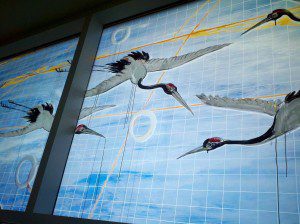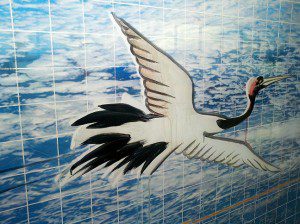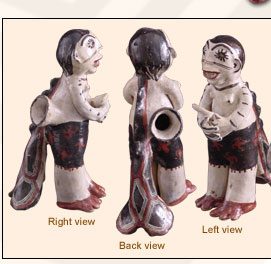The Taoist immortal “will have a garment of feathers, will ride on a beam of light or saddle a star…His bones will shine like jade, his face will glow, a halo will surround his head, all his body will emit light and will be as incandescent as the sun and the moon.” I am quoting Isabelle Robinet’s beautiful study of Taoist Meditation.
The Taoist shaman seeks to practice the immortal “art of ascending to heaven in full daylight.”
He is known as a “crane rider”. His preferred mount is the red-crowned crane, though he may also ride dragons or flying tigers or wind horses. In Chinese tradition, the red-crowned crane is a symbol of good fortune, longevity and immortality. In art and myth, immortals are depicted riding on cranes. A mortal who attains immortality is borne aloft on the wings of the crane. Red-crowned cranes are also called xian he or fairy cranes. The red-crowned crane features on bronzes of the Shang and Zhou dynasties, when the influence of the wu, or shaman, was great.
 For a sense of what this bird means in the ancient Chinese art of aviation, pause in the Southwest terminal next time you are at Oakland airport and spend time with the marvelous flight of red-crowned cranes that Chinese-American artist Hung Liu has painted in architectural glass. You han hardly fail to feel the delicious prickle across your shoulders as your wingfeathers begin to grow back.
For a sense of what this bird means in the ancient Chinese art of aviation, pause in the Southwest terminal next time you are at Oakland airport and spend time with the marvelous flight of red-crowned cranes that Chinese-American artist Hung Liu has painted in architectural glass. You han hardly fail to feel the delicious prickle across your shoulders as your wingfeathers begin to grow back.
You may be catching a plane today, but remember that tonight you could catch a crane…


